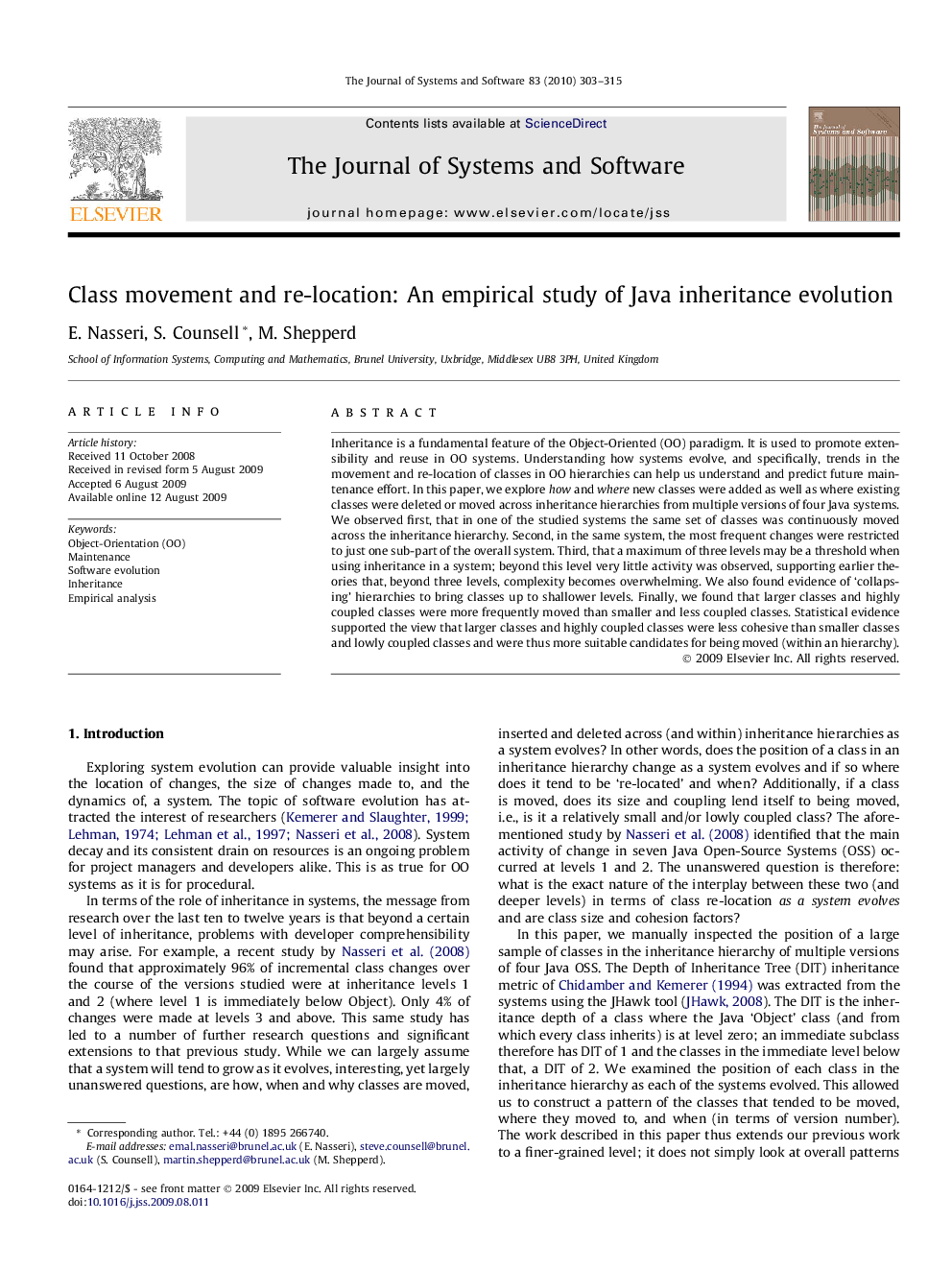| Article ID | Journal | Published Year | Pages | File Type |
|---|---|---|---|---|
| 461527 | Journal of Systems and Software | 2010 | 13 Pages |
Inheritance is a fundamental feature of the Object-Oriented (OO) paradigm. It is used to promote extensibility and reuse in OO systems. Understanding how systems evolve, and specifically, trends in the movement and re-location of classes in OO hierarchies can help us understand and predict future maintenance effort. In this paper, we explore how and where new classes were added as well as where existing classes were deleted or moved across inheritance hierarchies from multiple versions of four Java systems. We observed first, that in one of the studied systems the same set of classes was continuously moved across the inheritance hierarchy. Second, in the same system, the most frequent changes were restricted to just one sub-part of the overall system. Third, that a maximum of three levels may be a threshold when using inheritance in a system; beyond this level very little activity was observed, supporting earlier theories that, beyond three levels, complexity becomes overwhelming. We also found evidence of ‘collapsing’ hierarchies to bring classes up to shallower levels. Finally, we found that larger classes and highly coupled classes were more frequently moved than smaller and less coupled classes. Statistical evidence supported the view that larger classes and highly coupled classes were less cohesive than smaller classes and lowly coupled classes and were thus more suitable candidates for being moved (within an hierarchy).
